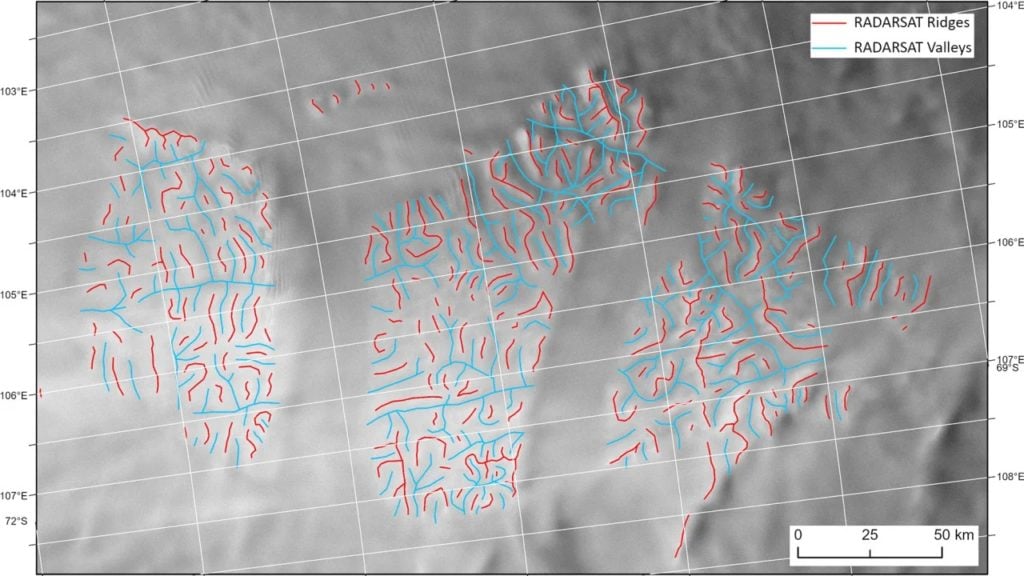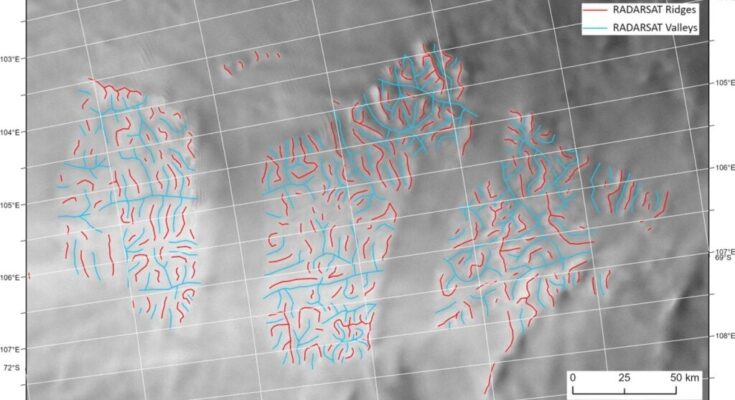
A long-forgotten, ancient landscape under the icy layers of East Antarctica, untouched for over fourteen million years, has been uncovered thanks to satellite data and special planes equipped with radar that can see through the ice.
Using special techniques to allow researchers to assess the area from afar, scientists mapped out an area in East Antarctica covering thirty-two thousand square kilometers. This is about the same size as Belgium.
Their research, featured in the journal Nature Communications, unveiled a landscape that had been shaped by rivers before the massive ice sheet covered it up. This ancient terrain would have resembled the hills and valleys we are familiar with in northern Wales today.
History of the ice sheet and how it changed
The team of researchers aimed to trace the history of the ice sheet determine how it changed over time. To understand this process, it is crucial to comprehend what the land looked like before it was concealed beneath layers of ice, as explained by Stewart Jamieson, the lead researcher and a professor of geography at the University of Durham.
In a statement, Jamieson pointed out that “the land underneath the East Antarctic Ice Sheet is less well known than the surface of Mars.” He further said, “And that’s a problem because that landscape controls the way that ice in Antarctica flows, and it controls the way it might respond to past, present and future climate change.”
How well preserved is the landscape?
Typically, you’d expect the movement and changes in ice to wear down and reshape any ancient landscapes underneath a continental ice sheet. However, in this case, the landscape has remained relatively untouched, which is quite unusual, as highlighted by Jamieson.
Learning why this particular ancient landscape remained undisturbed is crucial. It can assist scientists in making more accurate predictions about how the East Antarctic ice sheet will behave in the future. This layer holds enough ice to potentially raise sea levels by around sixty meters as our planet continues to warm.
Study results on climate
The study also concludes that Earth’s climate is heading toward temperature conditions that existed when this landscape likely formed about thirty-four to fourteen million years ago. During that time, temperatures were about three to seven degrees Celsius higher than those today.
The East Antarctic ice sheet initially formed approximately thirty-four million years ago. However, over time, it would have gone through periods of expansion and shrinking, occasionally exposing the land below.
According to Jamieson, the fact that this landscape endured through time suggests temperatures at the bottom of the ice sheet remained extremely cold and stable over these ancient terrains. This happened despite episodes of occasional climate warming.
Jamieson explained during a phone interview, “In other areas, we’d actually expect there to be liquid water, right between the ice and the bed, which helps grind stuff away. We don’t have that in our location. So that partly explains how something could survive for so long.”
Ancient landscape, hidden under East Antarctic ice for 14M years, revealed by satellite data & radar. A pre-ice age world of rivers and valleys! This discovery is crucial for understanding the region's response to climate change.
#Antarctica #ClimateChange #Science pic.twitter.com/sRm5D7b1h9
— ART OFFICIAL (@Sound_Pixel_) October 25, 2023
The data collected by scientists offered insights into what lay beneath the massive two-kilometer-thick ice sheet.
Jamieson explained that the data “effectively measures very small changes in the shape of the top of the ice and basically when we look at that and draw it out it looks like a series of interconnected valleys that must be underneath the icesheet. We’re basically seeing the ghost of that landscape from the top.”
Although the research team cannot determine the specific types of plants and animals that may have once existed in this area, the evidence of rivers implies that there was flowing water, making it highly likely that the landscape supported vegetation.




